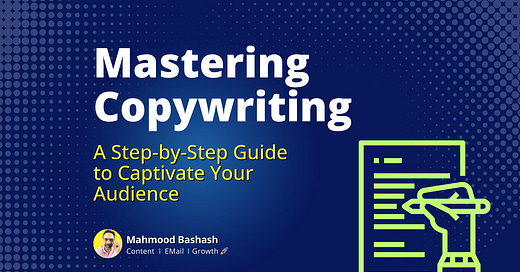Mastering Copywriting: A Step-by-Step Guide to Captivate Your Audience
In the fast-paced world of digital marketing, the art of copywriting stands as a powerful tool to engage and convert your target audience. If you find yourself struggling to craft compelling copy, fear not! This blog post breaks down a simple yet effective seven-step process to guide you through the journey of creating copy that resonates and converts.
Step 1: Research Your Target Audience
Before penning down a single word, delve into comprehensive research about your target audience. Understand their needs, preferences, and pain points. The more you know about them, the more effectively you can tailor your message to capture their attention.
Step 2: Identify Pains, Desires, and Objections
After conducting thorough research, compile a list of your audience's pains, desires, and objections. What keeps them up at night? What are their aspirations? Knowing these elements will lay the foundation for copy that speaks directly to their hearts.
Step 3: Lead with the Pains
Start your copy by addressing the pains you've identified. By acknowledging and empathizing with their struggles, you create an immediate connection. This step demonstrates that you understand their challenges, fostering trust and making your message more relatable.
Step 4: Transition into Their Desires
Once you've established a connection by addressing their pains, smoothly transition into their desires. Paint a vivid picture of the improved scenario they long for, creating a sense of aspiration and hope. This transition is crucial for maintaining engagement and building anticipation.
Step 5: Handle Their Objections
Anticipate objections your audience may have and address them head-on. This shows that you are transparent and ready to address any concerns they might have. Overcoming objections in your copy helps in building credibility and trust.
Step 6: Present Your Product
Now is the time to introduce your product or service. Clearly articulate how it addresses the pains, fulfills desires, and resolves objections. Highlight the unique selling propositions that set your offering apart from the rest.
Step 7: Call Them to Action
End your copy with a compelling call to action (CTA). Encourage your audience to take the next step, whether it's making a purchase, signing up for a newsletter, or engaging in another meaningful way. A well-crafted CTA is the key to converting interest into action.
Conclusion:
Copywriting is indeed simple but not easy. By following this seven-step process, you'll be better equipped to create copy that not only captures attention but also drives action. Remember, each step plays a crucial role in guiding your audience through a journey that resonates with them on a personal level. Embrace the simplicity, practice consistently, and watch your copywriting skills transform over time.





